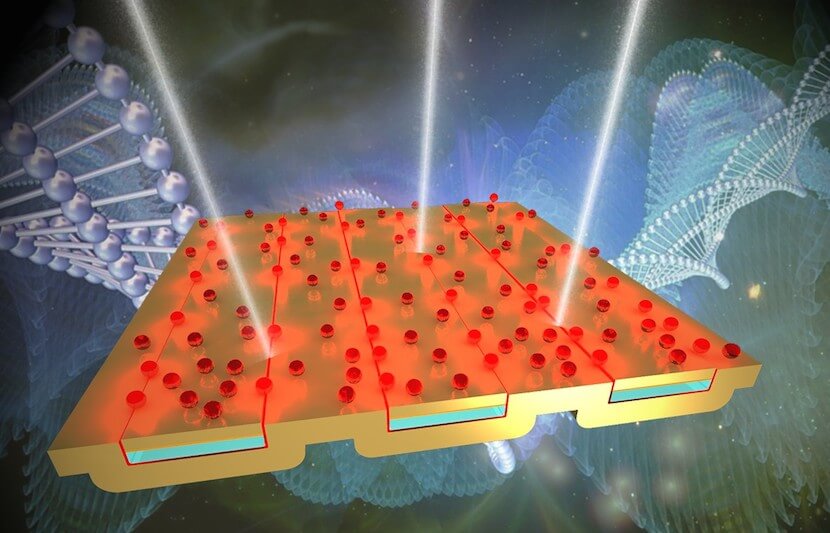A team of researchers led by engineers from University at Buffalo in New York (UB) has developed an optical device that has the potential to vastly increase the sensitivity and effectiveness of current drug and explosive detection techniques.
The University Network (TUN) spoke with Qiaoqiang Gan, associate professor of electrical engineering in the School of Engineering and Applied Sciences at UB and lead author of this study, about the significance of the new device.
New device is much more effective
Current methods of detecting drug or explosive residue on various materials involve spectroscopy — examining the interaction between particulate matter and various forms of light waves. One of the most accurate forms of spectroscopy is “infrared absorption spectroscopy,” which is used to find drug metabolites in an individual’s bloodstream, as well as to detect particles of explosive material in the air. The problem is, the devices today are only capable of absorbing about three percent of infrared light.
The new technology is more effective than the current optical devices being employed for spectroscopy, according to Gan. “We developed a light trapping structure that can squeeze infrared light into sub-5-nm gaps with very high efficiency (i.e. ~81% measured in our experiment), resulting in a very strong localized light field,” Gan said. The new technology’s ability to absorb 81 percent infrared light is staggering, given the three percent absorption of the devices in use today.
How does the new device work?
Basically, the device consists of two sheets of metal pressed together with some insulation in between. Using a technique known as “atomic layer distribution,” the research team was able to compress the two metal sheets so tightly together that the gap between them was only five nanometers wide.
“In this case, the infrared absorption spectrum of chemical or biomolecules can be enhanced significantly so that one will be able to resolve the target molecules more accurately,” Gan said, explaining the importance of reducing the space between the two metal sheets. “We demonstrated the application of this squeezed light using a process known as surface-enhanced infrared absorption (SEIRA) spectroscopy. The sensor, which acts as a substrate for the materials being examined, boosts the sensitivity of SEIRA devices to detect molecules at 100 to 1,000 times greater resolution than previously reported results.”
These results suggest that Gan and his team have made a major breakthrough in spectroscopy research. However, the optical device is not ready to be mass-produced just yet, as these optical devices are expensive and difficult to manufacture.
Gan is enthusiastic about the invention’s future prospects, while still acknowledging the road ahead before this technology can enter widespread use. “The ultra-sensitive bio-chip is currently in the R&D stage,” said Gan. “We are developing a low cost and large area manufacturing method under the support of National Science Foundation. If this manufacturing cost barrier can be addressed in 3-5 years, we will work on commercialization of this technology.”
Once costs associated with the development of these optical devices can be reduced, commercial production will begin, and this new optical device will likely become the gold standard in infrared spectroscopy.
The paper is published in Wiley Online Library.
The research team also includes Dengxin Ji, Alec Cheney, Nan Zhang, Haomin Song, and Xie Zeng from UB, Jun Gao and Suhua Jiang from Fudan University in China, Haifeng Hu from Northeastern University in China, and Zongfu Yu from the University of Wisconsin, Madison.



